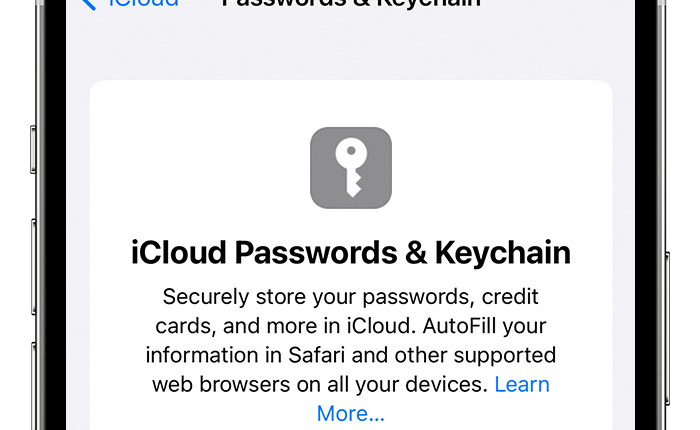EVERY iPhone comes with a built-in feature that can stave off devastating hack attacks.
Turning it on is one of the simplest ways to avoid a costly cyber-crisis.
It’s called iCloud Keychain and it’s totally free to use.
What are iCloud Keychain and Safari Strong Passwords?
We’re constantly told to choose complicated passwords – but that’s difficult with so many accounts.
iCloud Keychain remembers the passwords you type on your iPhone, encrypts them, and stores them in the cloud.
So you can choose very strong passwords for websites and appswithout having to remember them – your phone will simply enter them for you at log in.


This is one of the best defences against hackers.
“iCloud Keychain remembers things so that you don’t have to,” Appleexplains.
“It auto-fills your information – like your Safari usernames and passwords, credit cards, Wi-Fi networks and social log-ins – on any device that you approve.
“iCloud Keychain stores your passwords and credit card information in such a way that Apple cannot read or access them.”
Most read in Tech
And the Safari web browser now has a special feature called Strong Passwords.
When you sign up to a service on Safari, you’ll get an option to use an auto-generated password that’s very difficult for hackers to crack.
This password is automatically saved in your iCloud Keychain so you don’t even have to remember it.
You can also add passwords you already have into the Keychain.
But one of the best features is the password re-use alert.
It’s important to never use the same password on multiple accounts. If you do re-use passwords, hackers who break into one account can then get access to others.
Your Safari Saved Passwords will alert you when you have two passwords that match, and suggest a change for you.
How to set up iCloud Keychain
First, you’ll need to make sure you’re using an Apple device running iOS 7.0.3 or later, or OS X 10.9 or later for Macs.
On your iPhone, iPad or iPod Touch, follow these steps:
- Tap Settings > [your name] > iCloud (on iOS 10.2 or earlier, it’s just Settings > iCloud)
- Tap Keychain
- Tap the slider to turn on iCloud Keychain
For Mac devices, here’s what you need to do:
- Click the Apple menu in the top left
- Choose System Preferences
- Select iCloud
- Select Keychain
How to view iCloud Keychain passwords
On an iPhone with iOS 11 or later:
- Tap Settings > Accounts & Passwords > App & Website Passwords
- Use Touch ID or Face ID when prompted
- Tap a website to view your password
On an iPhone with iOS 10.3 or earlier:
- Tap Settings > Safari > Passwords
- Use Touch ID or Face ID to enter your device passcode
- Tap a website to view your password
On a Mac with OS X Mavericks 10.9 or later:
- Choose Safari > Preferences
- Click Passwords
- Select a website to view your passwords
- Select Show passwords for selected websites at the bottom of the window
- Enter your Mac password
Apple Passkeys
Apple has even gone one step further – getting rid of passwords entirely.
It’s called Passkeys, and it was added in the latest iOS update, so first check if you’ve got iOS 16 by going to Settings > General > Software Update.
Instead of signing up (or logging in) to a website using a password, you’ll use a Passkey.
This is a digital key that you don’t have to remember.
And you simply authenticate who you are using your fingerprint (Touch ID) or face (Face ID) on an iPhone or Mac.
It’ll be just as quick to log in, and means you’ll have a login that simply can’t be guessed or leaked.
Your Passkeys are stored on your devices, but will sync across multiple gadgets using Apple’s iCloud Keychain – which already exists to track passwords.
Nobody can read your Passkeys, Apple included.
And it means you can’t be tricked into handing over a password through phishing – because you won’t have any information to hand across.
The ultimate plan is to allow Passkeys to work on non-Apple devices too, including Windows laptops and Android phones.


Microsoft and Google have both been developing passwordless systems for years.
Best Phone and Gadget tips and hacks

Looking for tips and hacks for your phone? Want to find those secret features within social media apps? We have you covered…
We pay for your stories! Do you have a story for The Sun Online Tech & Science team? Email us at [email protected]
This post first appeared on Thesun.co.uk










